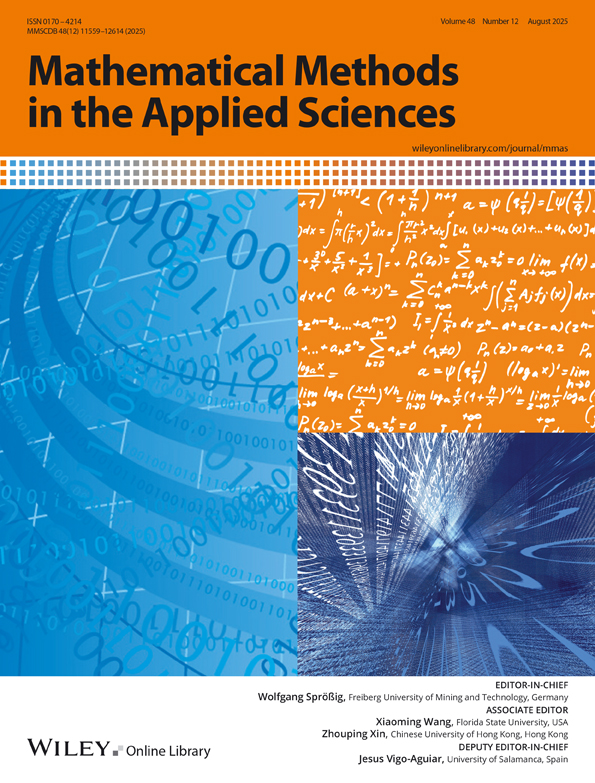Turing-Hopf Bifurcation of a Diffusive Predator-Prey System with Nonlocal Effect and Group Defense in Prey Against Generalist Predator
Funding: This paper is supported by the Natural Science Foundation of Shandong Province, China (No. ZR2024QA119) and the Excellent Doctor Project Fund from the Newly Introduced Talents Scientific Research Foundation at University of Jinan (No. XBS2448).
ABSTRACT
In this paper, we propose a diffusive predator–prey system with nonlocal effect and group defense mechanisms in the prey against a generalist predator, subject to homogeneous Neumann boundary condition. We then analyze the codimension-two Turing–Hopf bifurcation of this system. Specifically, we investigate the impact of the nonlocal effect on the stability and spatiotemporal dynamics of the system, determining the stability region and possible bifurcation curves in the plane defined by the diffusion coefficients of the prey and predator populations. Furthermore, by treating the diffusion coefficients of both populations as bifurcation parameters, we derive an algorithm to calculate the normal form of the Turing–Hopf bifurcation for this system, which allows for the analytical determination of the dynamical classifications near the Turing–Hopf bifurcation point. Finally, we conduct numerical simulations to validate the theoretical results. Notably, we observe stable spatially inhomogeneous steady states and stable spatially inhomogeneous periodic solutions.
Conflicts of Interest
The authors declare no conflicts of interest.
Open Research
Data Availability Statement
The numerical simulations in this paper are carried out using MATLAB software.




